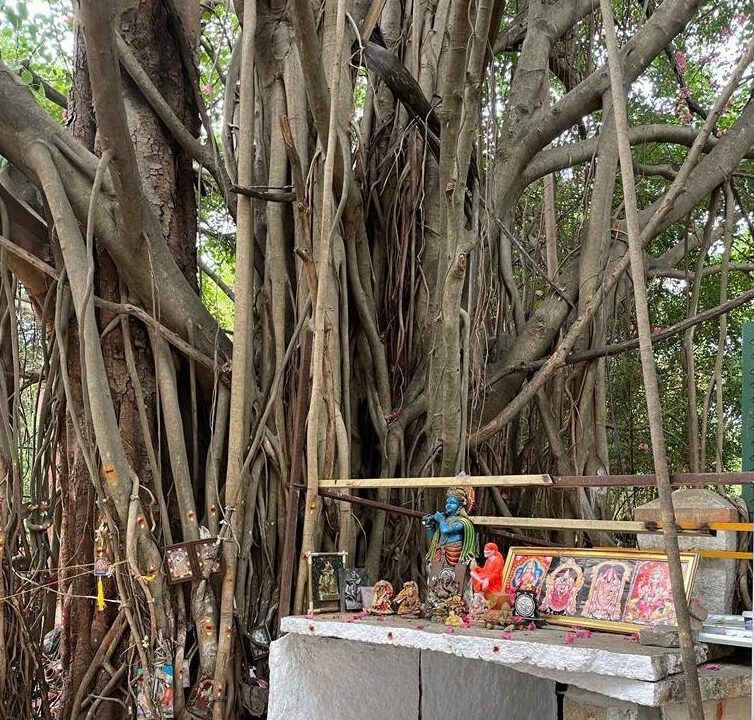Meera Bhardwaj
With the State Government proposing to bring 11 more tree species under the felling list, it has sent shock waves across the state as it includes KEYSTONE SPECIES like Banyan, Peepal, Neem and others. A peek at the unsigned draft notification reveals exemption of 11 tree species from the operation of Chapter XVI under Karnataka Forest Rules, 1969 with immediate effect. This means no permission is needed to axe and transport many iconic, heritage, spiritual and keystone species.
A copy of the unsigned draft notification available with Green Minute states, “In continuation of the notification No. FEE 32 FED 2015 dated 7.12.2016 and in exercise of powers conferred by sub rule (f) of rule 144 of the Karnataka Forest Rules, 1969, the government of Karnataka hereby exempt the following species from the operation of Chapter XVI of the said rules in the state of Karnataka with immediate effect, namely….”
Now the Trees that are likely to be included in the felling list also produce the most amount of Oxygen. They are:
- BANYAN TREE OR ALADA MARA
- NEEM TREE OR BEVU
- PEEPAL TREE OR ARALIMARA
- BAMBOO TREE OR BIDARU

Sacred trees in India are:
Ficus bengalensis (Banyan or Ala),
Ficus religiosa (Peepal or Arali),
Azadirachta indica (Neem or Bevu)
and many more but for the state government, these seem no longer sacred or important for human survival or the environment.
The draft notification shows the following11 tree species for exemption from Chapter XVI under Karnataka Forest Rules, 1969:
- Ficus bengalensis (Banyan, Ala)
- Ficus religiosa (Peepal, Arali)
- Azadirachta indica (Neem, Bevu)
- Pongamia pinnata (Hulgal, Honge)
- Ficus glomerata (Atti)
- Ziziphus mauritiana (Bore)
- Acacia nilotica (Babool, Karijaali)
- Swietenia macrophylla (Mahogany)
- Gmelina arborea (Shivani)
- Bambusa arundinacia (Dowga bamboo, Bidaru)
- Dendroclamus strictus (Medri bamboo, Bidaru)
Ficus bengalensis (Banyan): The most sacred tree species in India, the Indian Banyan tree (or Ala in Kannada), a Keystone species is native to the Indian subcontinent and among the largest trees in the world. If we plant this tree in our surroundings, this species is highly beneficial as they ensure the purity of air and reduces carbon dioxide in the atmosphere. It’s deep roots branches out and take roots by themselves like new trees over a very large area. This species is considered immortal and is an integral part of Indian ethos and culture. In fact, many people are scared to fell or cut these trees as it is considered a bad omen.
Ficus religiosa (Peepal): Another Keystone species, the sacred fig (Peepal) or Ashwattha tree or Arali is native to the Indian subcontinent and releases Oxygen 24 hours. So, people take shelter under it at night. Every village, town and even cities in Karnataka has an ARALIKATTE and this is where everybody gathers to settle their disputes and hold discourses.

Under the boughs of the massive Arali tree, villagers gather, discuss issues and hold meetings. This is known as the Bodhi tree as Lord Buddha gained enlightenment under this tree. So, in India, it has religious significance for almost everybody be it Buddhists, Hindus or Jains.
Azadirachta indica (Neem): Native to the Indian subcontinent, Neem, a Keystone species, is considered as an iconic religious tree. Further, it reduces the volume of greenhouse gases by absorbing a wide amount of carbon dioxide from the air and releasing a large amount of oxygen in our environment.
Every part of the tree has some or the other use. Its leaves, twigs, fruits while the seeds are a source of neem oil. In fact, this fast-growing tree is noted for its drought resistance. The leaves are used in Ayurveda for medicinal properties while Neem sticks are used as a tooth cleaner for ages.
Considered as green gold, bamboo trees produce 35 percent more Oxygen than any other trees in a specific area. It is said to be an atmospheric oxygen pump and solves many environmental problems such as controlling soil erosion, conserving water etc.
Dendroclamus & Bambusa (Bamboo): Dendroclamus strictus is a non-invasive giant bamboo reaching a height of 60 feet. As per A Keerthika and S B Chavan, ICAR in their research paper, Bamboo being a fast-growing and higher biomass-producing species showed oxygen production of 27.38 mt yr–1. Overall, this provides a huge scope for establishing oxy parks in India. A fully grown bamboo species generates 300 kg of oxygen every year per person. Holistically, the emerging oxygen crisis and increasing CO2 concentration is a common phenomenon all over the world. In order to mitigate this, the focus must be shifted to encourage the proportion of urban vegetation coverage.
Expressing total opposition, foresters, activists and environmentalists say under the guise of helping farmers and implementation of public projects, the state government is digging its grave by reducing the green cover across the state. This is not surprising as this government has been busy clearing projects and the only reason for such a move is some big project is likely to entail huge felling of keystone species.
Activists add on one hand, the Prime Minister has proposed a fund of $ 6.2 billion for tree-planting to increase forestation in line with agreements at the Paris Climate Change Summit, 2015 while the State Government not only proposes diversion of prime forest areas but also moves in to bring Keystone and Sacred species under the Felling List. Across the world, governments have already moved towards “green recovery” but the Karnataka government is busy weakening rules and regulations and diverting forests.

